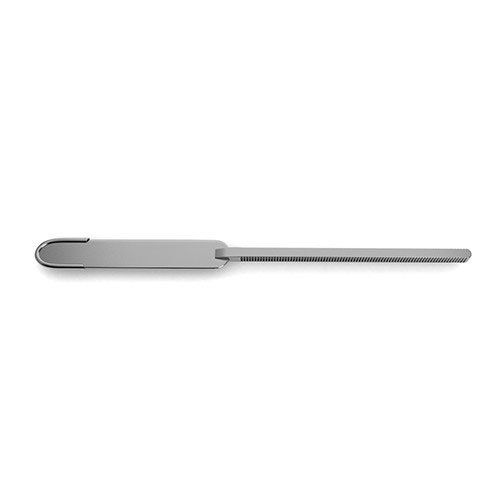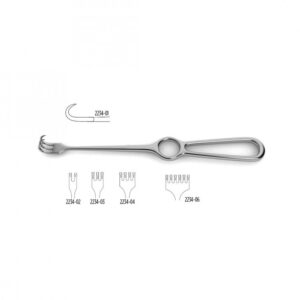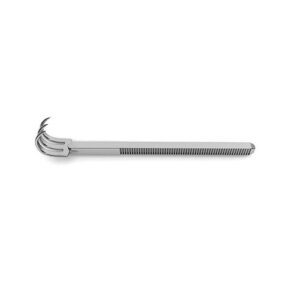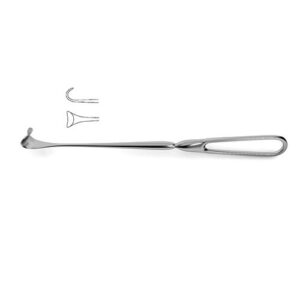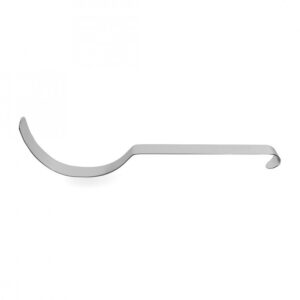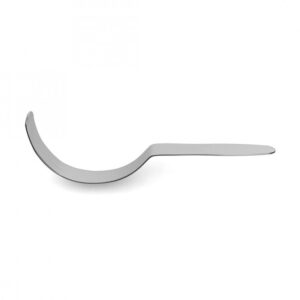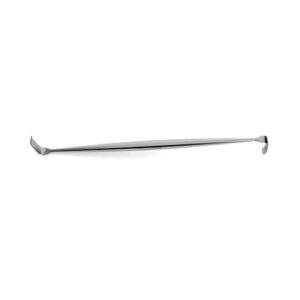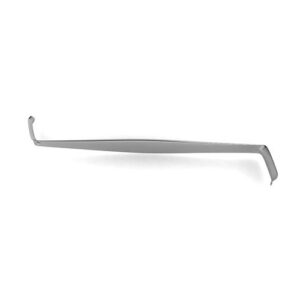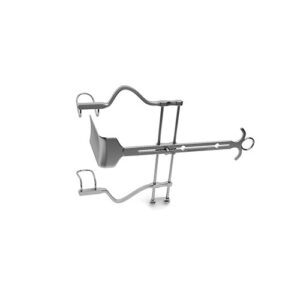| Name | Universal Ring Retractor Malleable Retractor Blade |
| Lead Time | 0-10 days |
| Specialty | General Instruments-Hooks & Retractors – Universal Ring Retractor System |
| Material Finish | Stainless Steel |
| Grade | Premium Operating Room |
| Units of Measurement | Each |
| Manufacturer | seemab surgical |
| Sterility | Non-Sterile |
| Usage | Reusable |
Universal Ring Retractor Malleable Retractor Blade
Universal Ring Retractor Malleable Retractor Blade
Universal Ring Retractor Malleable Retractor Blade has variable lengths and sizes to accommodate different procedures. This particular blade has a saw-like style to help grab onto tissue and is malleable so that it can be repeatedly bent to conform to desired angles and depths. After multiple uses and sterilizations, the premium stainless steel this instrument is comprised of is able to resist corrosion.
SKU:
VI-01-609
Category: Hooks & Retractors
Description
Shipping & Delivery
Related products
Cushing Vein Retractor – Fenestrated Handle
Cushing Vein Retractor - Fenestrated Handle
fenestrated handle
Cushing Vein Retractor is a more light-weight instrument due to its fenestrated handle. The lengths can range from 9" to 16." This vein retractor can be used during general surgeries to retract veins or other small tissues. It may also be used in other medical procedures such as neurosurgery to pull back tissue.
Deaver Retractor – Flat Handle, Curved End
Deaver Retractor - Flat Handle, Curved End
flat handle, flexible, curved end
Deaver Retractor is flexible and includes a flat handle with a curved end. This uniquely shaped retractor allows the surgeon to have a more comfortable hold while positioning it during surgeries. These surgeries typically involve areas in the deep abdominal or chest cavity. The flexible nature of the slightly curved blade may help to prevent injury to the organs area being held. In order to accommodate certain cases, this instrument is offered in various blade widths and lengths.
Cottle Tenaculum
Cottle Tenaculum
angled, 6-1/4" (16.0 cm)
Cottle Tenaculum has a long, slim handle with a hook that tapers into an angled point. The primary use of this hook is to grasp or hold tissue away from the surgical site in order to provide the surgeon with greater visibility to the area. This instrument is offered in a 6 ?" length.
Deaver Retractor – Flat Handle
Deaver Retractor - Flat Handle
flat handle, flexible
Deaver Retractor with a flat handle contains a flexible curved blade that is offered in two different widths and lengths depending on the surgical requirements. During general operations, specifically the involvement of the abdominal or chest cavity, this retractor can allow the surgeon to move one side of the incision to access the area that needs attention. If a deeper section needs to be accessed, the longer and wider blade may be more beneficial.
Balfour-Baby Pediatric Abdominal Retractor
Balfour-Baby Pediatric Abdominal Retractor
Balfour-Baby Pediatric Abdominal Retractor has a maximum spread of 3 ?," which is ideal for smaller patients, such as young children. This retractor system also includes fixed fenestrated side blades that help to spread open an incision and allow for adequate inspection of the abdominal cavity.
Davis Retractor
Double-ended, 5.0 mm x 16.0 mm & 8.0 mm x 21.0 mm blades, 5-1/2" (14.0 cm)
Davis Retractor is a stainless steel instrument that is double-ended and has opposing blades on either end. This retractor is able to divide and keep edges of an incision open. This instrument is also protected by the seemab surgical manufacturer warranty on defects in materials and workmanship.
Crile Retractor
Crile Retractor
double-ended, 3.0 mm x 11.0 mm & 6.0 mm x 20.0 mm blades, 4-1/2" (11.4 cm)
Crile Retractor is a hand-held instrument that can hold back tissue or organs so that the surgical site can be accessed. This retractor has a wide body and right-angle blades on each end to maintain the desired position once inserted around the edges of an incision. It is offered in a 4 ?" length, which is idea for smaller openings.
Balfour Abdominal Retractor W/ Fixed Side Blades – 4″ Deep
w/ fixed fenestrated side blades, 4" deep & center blade #2470-73 (3-3/8" x 2-1/2")
Balfour Abdominal Retractor with Fixed Side Blades contains fenestrated side blades that are fixed onto the instrument. This retractor is primarily used during surgeries in which large abdominal incisions need to be held open to provide more visibility to the surgeon. Moreover, the instrument is offered in different sized spreads to accommodate different patients.

